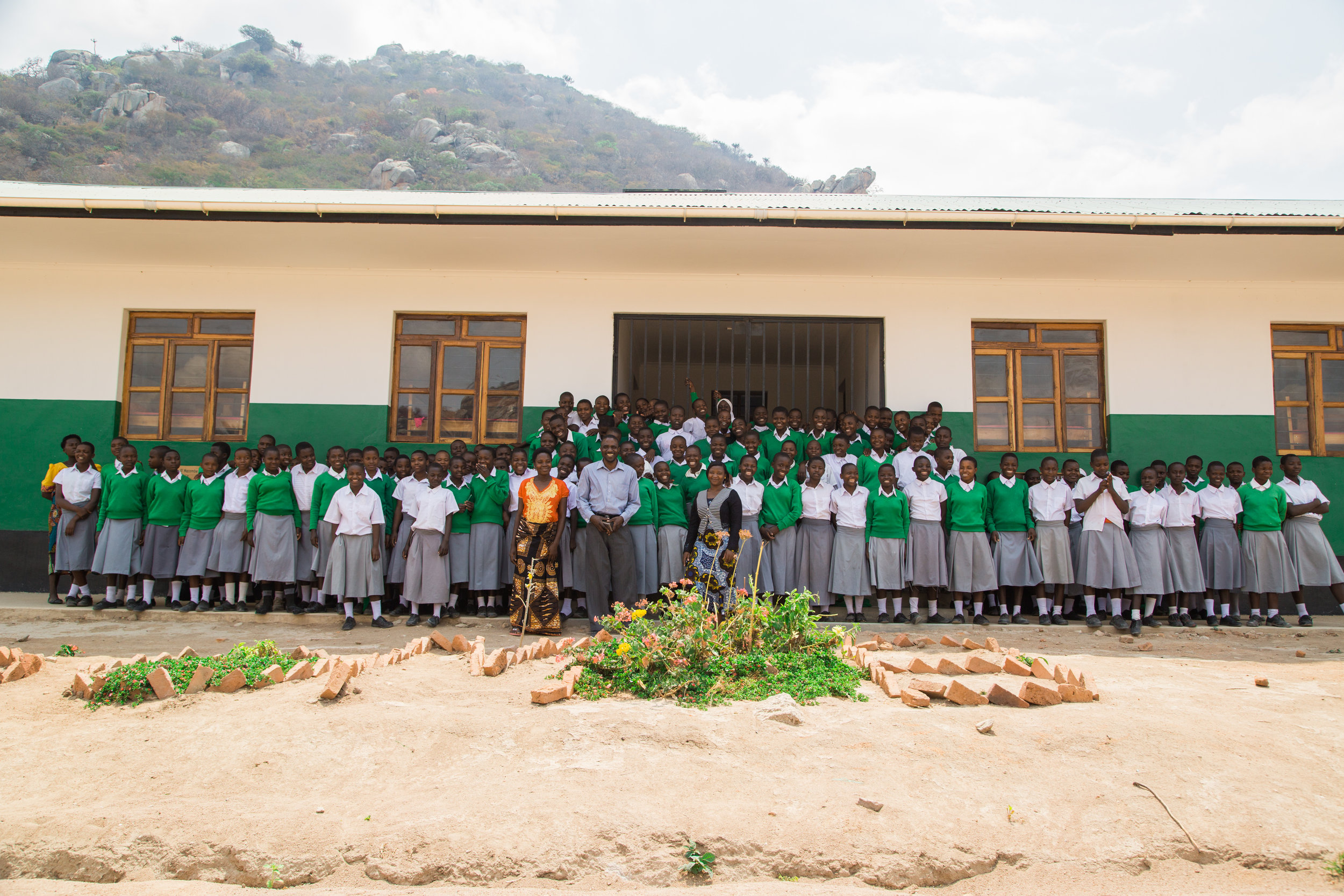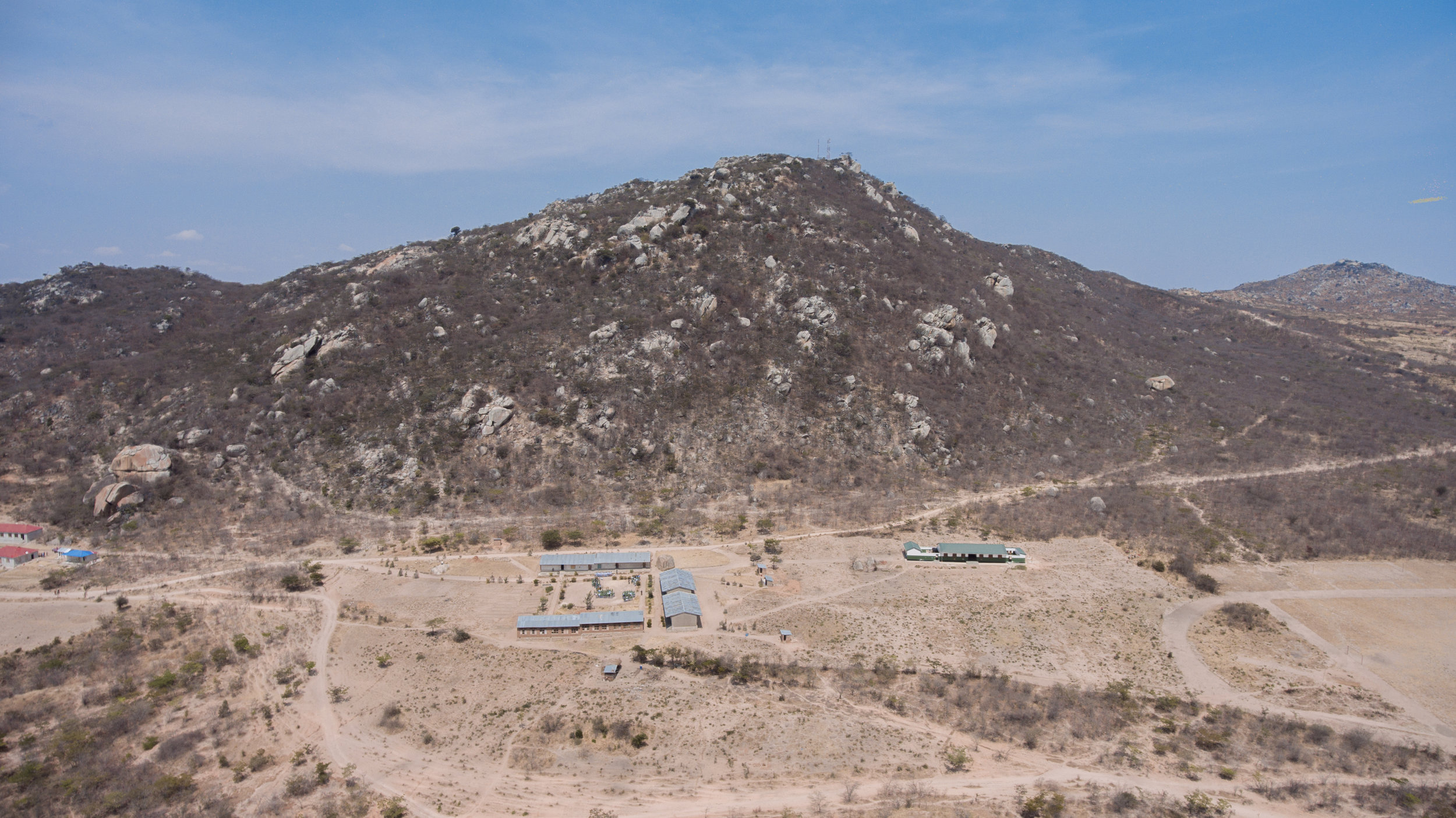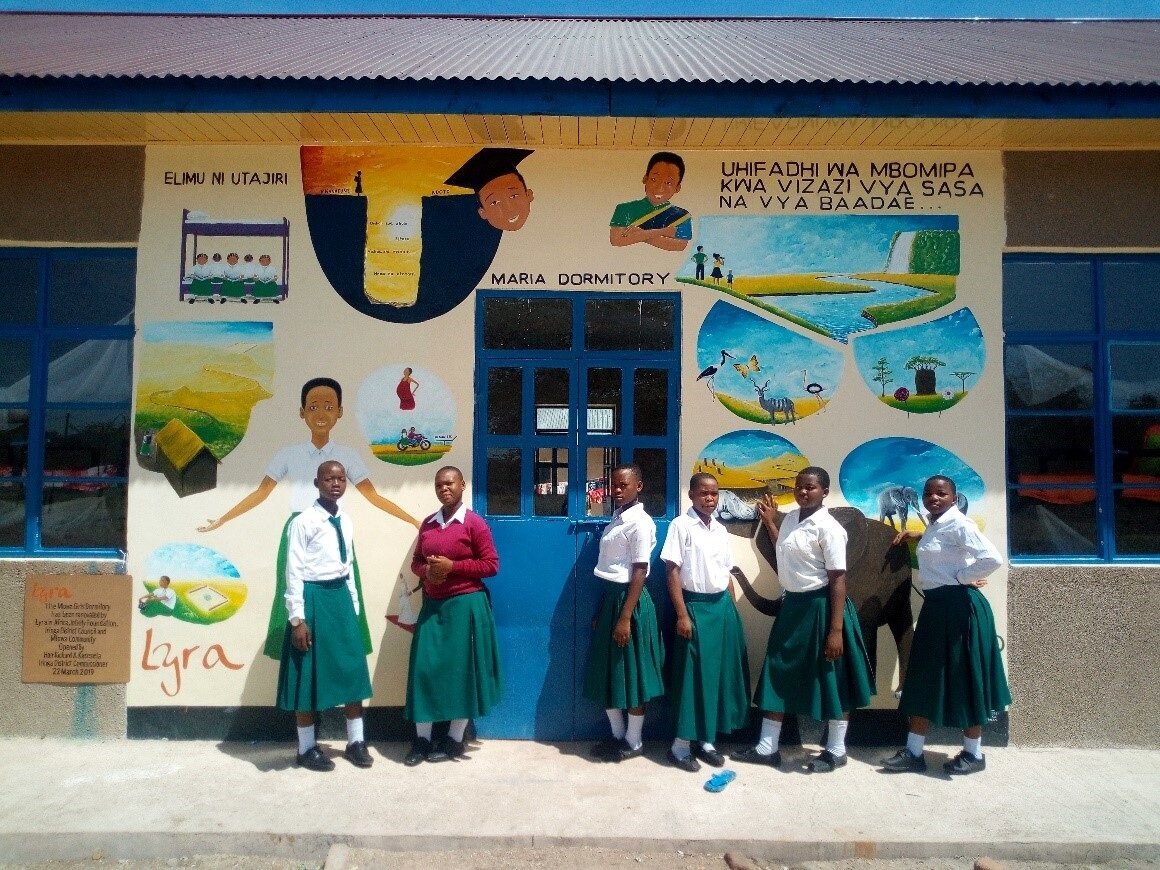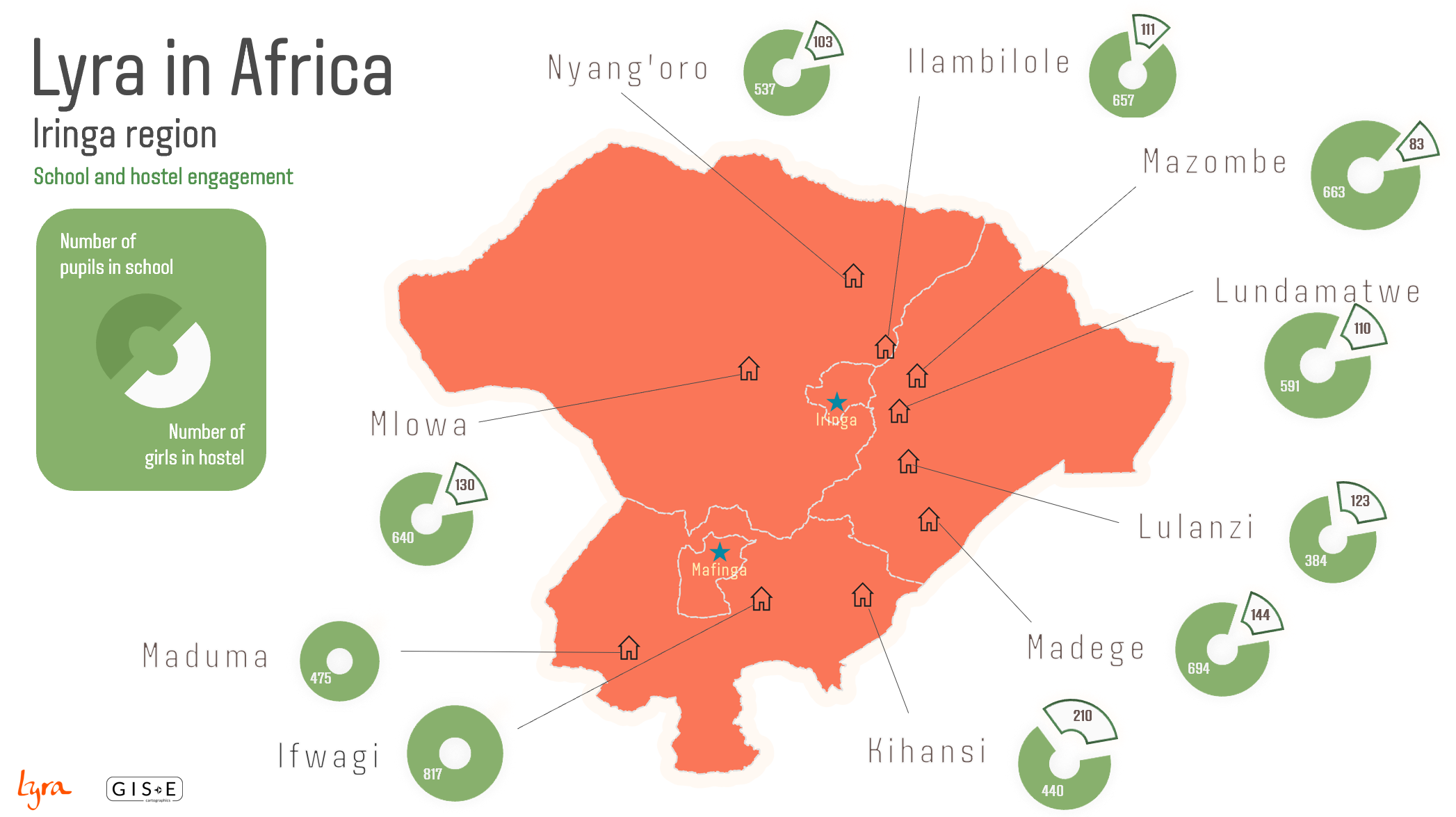The Lyra Hostel
The central tenet of our model is to build eco-friendly, innovative low-carbon hostels for girls in government ward secondary schools where there is a need. These hostels provide girls with a safe space to live and study, giving them an opportunity to complete their studies. We build hostels on the request of community elders, and together with the rural communities.Communities contribute construction materials and labour, and as we hand over the hostels to them, continue to maintain and provide food for the girls, enabling those who live far from school to safely attend and study.
Since the beginning of the hostel construction program in 2012, 2,500 girls have lived at our hostels with no reported pregnancies. This compares with a total of 118 girls who did not live in hostels dropping out of seven schools between 2012 and 2019 after becoming pregnant. This is an official number, but we believe the true number to be much higher as many pregnancies are registered simply as drop-outs. 787 drop-outs were registered in the same time.
Since 2012 Lyra has built 13 hostels to-date,
housing over 1,000 girls per year .
Green design
Since 2017, Lyra has built hostels using our own green design. What makes Lyra’s innovative hostel different is primarily its low-carbon, aspirational design that takes the girls needs into consideration. Our preferred raw material is compressed earth bricks, or Interlocking Stabilised Soil Blocks (ISSB). Soil is the major raw material for a stabilised brick and the preparation only requires labour, making this one of the cheapest ways to produce bricks.
A small amount of cement (5-10%) is added to soil and manually compressed in a block press. The blocks are air-cured rather than fired. This is a low-cost, carbon-saving alternative to the traditionally used environmentally damaging fired bricks.
Enhanced Academic Performance
In 2018 the lower secondary enrolment rate stood at 26% in rural Tanzania and higher secondary enrolment at 6%, with only 1% of girls completing higher secondary education. There is a clear correlation between levels of education and teenage pregnancy. As levels of education rise, the risk of pregnancy falls. 52% of adolescent girls with no education are pregnant or have given birth, compared to 10% of adolescent girls with a secondary or higher education.
Completing a good quality secondary education is thus one of the most effective ways to reduce the risk of early marriage and pregnancy. Girls will have smaller, healthier and wealthier families later in life than those who do not attend school.
Lyra hostels give girls a safe space to live, but also time to study after school and at the weekends. This translates into higher academic achievements for girls living in the hostels. Lyra conducted an analysis of the difference in academic performance of hostel girls and non hostel girls, focusing on national exam results over a four year period. Across these schools the number of hostel girls in the top performer category is significantly higher than girls who did not live in hostels. During the four years and across all schools, there are significantly more hostel girls in the top performer category than non-hostel girls. This is a near consistent trend for the four years of data.
As a result of the barriers rural girls face in Tanzania, they are disadvantaged from the start, and only 1% finish higher secondary education. Lyra works tirelessly to improve gender equality and quality of education for rural girls.
Download a snapshot of the barriers secondary school girls face in Tanzania →















